Occupational Safety Training for Wheel Rim Manufacturing
99,000 ₫
Note: The above price is calculated per person and may vary depending on the number of trainees participating in the course and market fluctuations. For more accurate pricing information, please refer to the price list or contact our consultants directly.
Occupational safety is an important issue in wheel rim manufacturing factories and needs to be addressed promptly to ensure the health and safety of workers, as well as to enhance the reputation of businesses. The Occupational Safety Training course is an effective solution to raise awareness about accident prevention for workers involved in wheel rim production.
Table of Contents
Toggle1. Overview of Wheel Rims
a. What is a Wheel Rim?
A wheel rim, also called a wheel rim, is a component of car wheels, motorcycles, or other types of vehicles. The wheel rim is the outer part of the wheel where the tire is mounted and held securely. The wheel rim plays an important role in ensuring stability and safety while the vehicle is in motion.
Wheel rims are typically made from materials such as steel, aluminum, or light alloys. These materials not only ensure durability but also help reduce the vehicle’s weight, thereby improving operational performance and fuel efficiency. Wheel rims are also designed in various shapes and sizes to suit different types of vehicles and usage needs.
Some important functions of wheel rims include:
- Providing durability and stability: Helps the vehicle maintain stability during movement, especially at high speeds.
- Creating contact between tire and road: Helps the tire grip the road better, increasing vehicle control and ensuring safety.
- Enhancing vehicle aesthetics: With diverse designs and styles, wheel rims also contribute to the vehicle’s appearance and style.

b. Machinery for Wheel Rim Production
- Hot Forging and Casting Machines:
- Hot Forging Machine: Used to press and shape aluminum or steel blanks at high temperatures. This process helps create blanks with high strength and uniform structure.
- Casting Machine: Used to cast rims from molten aluminum. Casting technologies may include gravity casting, high-pressure casting, or centrifugal casting, enabling the production of rims with complex shapes and high precision.
- CNC Machining Center:
- This is a high-precision machining machine that uses numerical control technology to cut, drill, mill, and turn surfaces of the rims. CNC machines ensure product accuracy and uniformity while minimizing errors and material waste.
- Rolling Machine:
- Rolling machines are used to create grooves, ribs, and other details on the rim’s surface. This rolling process enhances the hardness and load-bearing capacity of the rim.
- Surface Treatment Machines:
- After machining, rims require surface treatment to improve durability and aesthetics. Surface treatment machines such as polishing machines, sandblasting machines, paint spraying machines, and plating machines are used to clean, polish, and apply protective coatings to the rims.
- Inspection and Measuring Machines:
- Automated measuring machines and quality inspection systems are used to check dimensions, accuracy, and other quality standards of the rims. This ensures the final product meets technical and safety requirements.

c. Famous Wheel Rim Brands
- BBS:
- The German brand BBS is famous for sporty and racing car rims. BBS is known for high quality and unique designs, often used in international motorsport competitions.
- OZ Racing:
- OZ Racing, an Italian brand, specializes in producing rims for sports and racing cars. OZ Racing rims are known for durability and refined design.
- HRE Wheels:
- HRE Wheels is an American brand famous for manufacturing premium rims made from high-quality aluminum alloys. Their products often feature luxurious designs and customization options.
- Enkei:
- Enkei, a Japanese brand, is known for lightweight and durable rims. Enkei uses advanced casting and manufacturing technology to produce high-quality rims.
- Rays Engineering:
- Rays Engineering, also from Japan, is famous for rims such as the TE37 and Volk Racing series. These products are popular among sports car and racing enthusiasts.
- Work Wheels:
- Work Wheels is a Japanese brand known for premium aftermarket rims. Work Wheels offers many models and styles, from sporty rims to racing rims.
- Brembo:
- Besides being famous for braking systems, Brembo also produces premium rims, especially for sports and racing cars.
- Vossen:
- Vossen, an American brand, specializes in rims with modern and sophisticated designs. Vossen products stand out with unique designs and high customization capabilities.
- TWS (Taiwan Wheel System):
- TWS, a Taiwanese brand, is well-known for sporty and racing rims. TWS rims are designed to optimize performance and aesthetics.
- Alpina:
- Alpina, a German brand, specializes in producing sporty and premium rims. Alpina products are often designed specifically for BMW models.

d. Specific Jobs in a Wheel Rim Manufacturing Plant
Group 1
- Executive directors, deputy executive directors, department heads in the wheel rim manufacturing plant.
Group 2
- Safety officers: manage safety within the plant, design safety procedures, supervise and enforce employee compliance with safe work processes.
Group 3
- Operate hot forging and casting machines to shape rim blanks. Tasks include adjusting machines, checking temperature and pressure, and ensuring products meet quality standards.
- Use CNC machining centers to cut, drill, mill, and turn the rim surfaces. Ensure details are machined accurately and meet standards.
- Operate rolling machines to create grooves, ribs, and other surface details on the rims. Ensure the product has good hardness and load-bearing capacity.
- Use polishing machines, sandblasting machines, paint spraying machines, and plating machines for surface treatment. Tasks include cleaning, polishing, and applying protective coatings.
- Use automatic measuring and inspection equipment to check dimensions, accuracy, and other quality standards of the rims. Record and report inspection results.
- Package rims according to regulations to ensure products are not damaged during transportation. Prepare and manage shipping documents.
Group 4
- Office work, service, sales, marketing.
- Production management, quality management, human resource management, materials management, financial accounting management.
- Research and development of new products, design of packaging and product models.
2. Overview of the Occupational Safety Training Course for Wheel Rim Production
Within the scope of this article, we focus on issues related to Group 3, because Group 3 is directly involved in the production process and faces the highest occupational safety risks. For more information on other groups, please refer here.
a. What is Group 3 Occupational Safety Training?
- Occupational safety training for Group 3 consists of sessions that equip workers with awareness on how to prevent workplace accidents.
- The training course will help workers identify and avoid hazards, reducing the risk of occupational accidents during work.
REGISTER FOR OCCUPATIONAL SAFETY TRAINING SERVICE
b. Training Duration
Initial occupational safety training duration:
- Total training duration is at least 24 hours, including the assessment time.
- 8 hours of theory on the system of occupational safety and hygiene policies and laws.
- 8 hours of theory on basic occupational safety and hygiene knowledge.
- 4 hours of theory on specialized training content.
- 2 hours of practical training on specialized content.
- 2 hours of theory assessment at the end of the course.
The training center will schedule the sessions over multiple days, depending on the workers’ availability. Typically, there will be 6 training sessions over 3 days, provided the manufacturing enterprise can arrange continuous learning time.
Periodic occupational safety training:
- Before the occupational safety card expires, workers who wish to renew it must complete a periodic occupational safety training course, with periodic training duration equal to at least 50% of the initial training duration.
Explanation: The total duration of periodic occupational safety training is at least 12 hours, including the assessment time. After completing the periodic training and passing the test, workers will be reissued or have their occupational safety card renewed.
c. Training Content
| No. | TRAINING CONTENT | TRAINING DURATION (HOURS) | |||
| Total | Including | ||||
| Theory | Practice | Test | |||
| I | System of policies and laws on occupational safety and hygiene | 8 | 8 | 0 | 0 |
| 1 | Overview of the system of legal documents on occupational safety and hygiene. | 6 | 6 | ||
| 2 | System of occupational safety and hygiene standards and technical regulations. | 1 | 1 | ||
| 3 | Specific regulations by state management agencies on occupational safety and hygiene when constructing, expanding, or renovating facilities for manufacturing, using, storing, and inspecting machinery, equipment, materials, and substances with strict occupational safety and hygiene requirements. | 1 | 1 | ||
| II | Basic knowledge of occupational safety and hygiene | 8 | 8 | 0 | 0 |
| 1 | Basic knowledge of hazardous and harmful factors in the workplace. | 4 | 4 | ||
| 2 | Methods for improving working conditions. | 1 | 1 | ||
| 3 | Safety culture in production and business. | 1 | 1 | ||
| 4 | Rights and obligations of employers and employees; occupational safety and hygiene policies and regimes for employees; functions and tasks of the occupational safety and hygiene network. | 1 | 1 | ||
| 5 | Workplace safety and hygiene regulations, safety and hygiene signs and instructions, use of safety equipment and personal protective equipment; first aid skills for occupational accidents, and prevention of occupational diseases. | 1 | 1 | ||
| III | Specialized training content | 6 | 4 | 2 | 0 |
| Comprehensive knowledge about machinery, equipment, and substances that generate hazardous and harmful factors; analysis, assessment, and management of occupational safety and hygiene risks; safe working procedures with machinery, equipment, and substances subject to strict occupational safety and hygiene requirements. | 6 | 4 | 2 | ||
| IV | Assessment of occupational safety training content at the end of the course | 2 | 2 | 0 | 0 |
| Total | 24 | 22 | 2 | ||
See more training content for 6 groups.
d. Occupational Safety Card
After completing the occupational safety training course and passing the assessment, workers will be issued an occupational safety card (commonly referred to as a Group 3 occupational safety certificate).
The Group 3 safety card will clearly display information such as full name, date of birth, job, and specific work environment. It will also include training duration, an official stamp, and the signature confirming course completion.
According to the card issuance regulations specified in Clause 2, Article 24 of Decree 44/2016/NĐ-CP, there are two cases:
- If the employer and employee have a labor contract, the employer must sign, stamp, and seal the safety card for the Group 3 trained employee after completing the training and passing the assessment from an accredited occupational safety training unit.
- If the worker is a freelancer, seasonal worker, or does not have a labor contract, the training unit must sign, stamp, and seal the safety card for the worker after completing the training and passing the assessment.

3. Identifying hazards affecting workers in wheel rim manufacturing
During the wheel rim manufacturing process, workers may encounter many hazards that affect their health and safety. Identifying and managing these hazards is extremely important to ensure a safe working environment. Below are some main hazards and corresponding preventive measures:
- Mechanical hazards:
- Hazard description: Machines such as hot presses, molding machines, and CNC machines can cause injuries such as hand entrapment, cuts, or crushing if not operated properly.
- High-temperature hazards:
- Hazard description: The hot pressing and molding process uses very high temperatures, which can cause thermal burns to workers.
- Chemical hazards:
- Hazard description: Chemicals used in surface treatment processes such as paints, solvents, and coatings can be harmful to the skin, eyes, and respiratory system.
- Dust and small particle hazards:
- Hazard description: Machining and polishing generate metal dust and small particles that can damage workers’ respiratory systems.
- Noise hazards:
- Hazard description: Operating machinery generates loud noise, which can damage workers’ hearing.
- Physical health hazards:
- Hazard description: Work that requires prolonged standing, heavy lifting, or repetitive movements can cause musculoskeletal problems.

4. Safety measures in wheel rim manufacturing
During the wheel rim manufacturing process, ensuring worker safety is extremely important. Below are some specific safety measures that manufacturing plants should implement:
- Training and raising awareness of occupational safety:
- Description: Organize regular occupational safety training courses, provide guidance on using machinery and personal protective equipment (PPE).
- Benefit: Helps workers clearly understand safe working procedures, recognize hazards, and prevent accidents.
- Use of personal protective equipment (PPE):
- Description: Provide and require workers to fully use PPE such as cut-resistant gloves, safety goggles, protective clothing, respirators, earplugs, and safety shoes.
- Benefit: Minimizes the risk of injuries, burns, inhaling toxic chemicals, and hearing damage.
- Regular maintenance and inspection of machinery and equipment:
- Description: Perform regular inspection and maintenance of manufacturing machinery and equipment such as hot presses, molding machines, CNC machines, and ventilation systems.
- Benefit: Ensures machinery operates stably, reduces breakdown risks that may cause accidents.
- Establishing and maintaining a safe working environment:
- Description: Arrange a clean, well-ventilated workspace; install dust extraction systems, ventilation, and adequate lighting. Ensure passageways and emergency exits are always clear.
- Benefit: Reduces the risk of accidents from slips, suffocation, and other environmental factors.
- Implementing safe work procedures:
- Description: Develop and strictly comply with safe working procedures, from operating machinery to handling materials and chemicals.
- Benefit: Ensures all operations are carried out correctly, minimizing errors and accident risks.
- Frequent safety monitoring and inspection:
- Description: Establish an occupational safety supervision department, regularly check compliance with safety regulations, and promptly detect potential hazards.
- Benefit: Ensures safety measures are always maintained and promptly resolves arising issues.
- Emergency response and first aid:
- Description: Equip adequate first aid kits, develop emergency response plans, and train workers in basic first aid skills.
- Benefit: Ensures the ability to respond quickly and effectively in the event of an accident, minimizing consequences.
- Minimizing exposure to chemicals and dust:
- Description: Use dust extraction and ventilation systems, limit the use of hazardous chemicals, and provide protective equipment such as respirators. Regularly conduct work environment monitoring in factories to collect and analyze harmful factors for workers, thereby adjusting and reducing hazards to prevent occupational diseases.
- Benefit: Protects workers’ respiratory health and reduces the risk of occupational diseases.
5. Benefits of occupational safety training in wheel rim manufacturing
An Toan Nam Viet provides your business with the following outstanding benefits after completing occupational safety training courses as stipulated in Decree 44/2016/NĐ – CP on Occupational Safety and Hygiene for companies, factories, and enterprises.
- Workers can recognize potential occupational accident risks and take preventive measures to avoid accidents.
- Your business can establish risk prevention measures in production, operation, and maintenance processes.
- Reduce costs in case of occupational safety risks.
- Uninterrupted production helps increase labor productivity and product quality.
- Comply with occupational safety laws, avoiding legal risks.
- Create credibility and professionalism in all aspects, thereby enhancing your business brand.
Nam Viet’s training courses are the solution to prevent and combat external factors that may affect each individual, helping them avoid dangers that can lead to injury or, more seriously, death.
REGISTER FOR OCCUPATIONAL SAFETY TRAINING SERVICES
6. Customer feedback after completing occupational safety training in wheel rim manufacturing
An Toan Nam Viet has many years of experience in the mission of accompanying many businesses in Vietnam in general and in the southern provinces in particular. That responsibility for Nam Viet is extremely valuable, which is why our Occupational Safety Training work is increasingly focused and professional. The driving force for An Toan Nam Viet’s growth today comes from both positive feedback and suggestions from businesses. Below are the feedbacks from our partners we have served.
Bac Nam E&C Construction Investment Joint Stock Company
“This is the first time I have used An Toan Nam Viet’s services, and I was very surprised by the 24/7 enthusiastic support from the consulting team. The class organization was quick and convenient for our company. Thank you very much for Nam Viet’s service!”
Hoa Dat Construction and Trading Joint Stock Company
“Nam Viet’s service has helped us a lot in simplifying occupational safety and completing safety documentation for our work process. The consulting team is enthusiastic and timely in addressing our questions. 5 stars for Nam Viet.”
See more customer interview sessions after using the service of An Toan Nam Viet
7. An Toan Nam Viet’s occupational safety training capacity
An Toan Nam Viet is a reputable and high-quality occupational safety training center in Vietnam today. Occupational safety training sessions are held continuously at production workshops, factories, or construction sites nationwide (63 provinces in Vietnam).
REGISTER FOR OCCUPATIONAL SAFETY TRAINING SERVICES
Occupational safety training license
- An Toan Nam Viet has been inspected and certified by the Department of Safety of the Ministry of Labor, Invalids, and Social Affairs as meeting the conditions for conducting occupational safety and hygiene training. This further strengthens our occupational safety training capacity.

Materials and lectures
- Before occupational safety training materials are used in occupational safety training courses, they are reviewed and approved to ensure the lectures are always accurate and effective when applied.
- The teaching methods of the trainers are standardized according to An Toan Nam Viet’s teaching standards, which are methods that occupational safety training experts have researched and summarized during teaching to bring the highest knowledge acquisition efficiency to learners.
Facilities
- Controlling classroom factors affecting the training process will increase teaching efficiency and learners’ knowledge acquisition.
- Facilities supporting the training course are always spacious classrooms meeting standards for area, lighting, and training equipment, etc.
8. Reputable nationwide occupational safety training center
At An Toan Nam Viet, we always put our dedication to occupational safety training as a top priority. For us, imparting self-protection knowledge to workers so they have safety skills for their livelihoods is contributing to building the country.
To ensure training effectiveness, we prepare carefully and meticulously, even the smallest details, from tools, teaching equipment to curriculum, materials, sound, and lighting.
Our occupational safety trainers are experts with many years of experience in the field. They even have research projects identifying hazards in all industries and how to prevent them.
The trainers’ lectures are drawn from real-life practice and delivered in a lively and easy-to-understand way to workers. These factors help workers feel comfortable during the learning process and absorb our training knowledge well. Of course, the knowledge delivered always adheres to Decree 44/2016/NĐ-CP.
From there, they master many hazard prevention measures and self-protection methods, applying them most appropriately in their actual work.
Our safety training center proudly provides reputable, professional occupational safety training services with the following advantages:
- Competitive training costs while maintaining training quality.
- Flexible training schedules in line with company production conditions.
- Fast and compliant procedures for issuing occupational safety training certificates.
- Trainers with many years of experience in the profession.
- Classrooms are controlled for factors affecting training, improving teaching performance and learner knowledge absorption.
- Lectures tailored to occupational safety practices at businesses.
- An Toan Nam Viet works diligently and professionally to support customers accurately and promptly.

9. Reference materials for occupational safety training in wheel rim manufacturing
- Occupational safety materials for wheel rim manufacturing
- Occupational safety training material set
- Occupational safety training test set
- Occupational safety training curriculum for wheel rim manufacturing
- Multiple-choice occupational safety test for wheel rim manufacturing
No comments yet

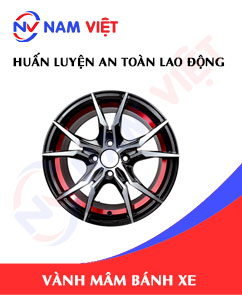
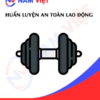
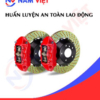



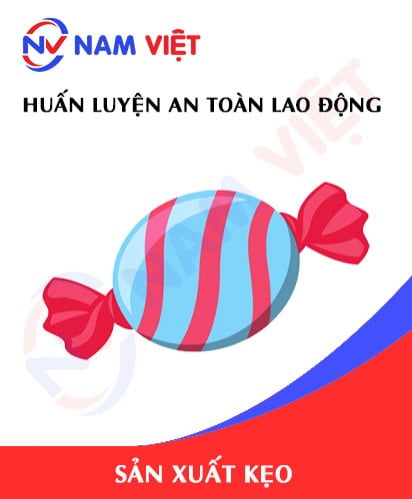
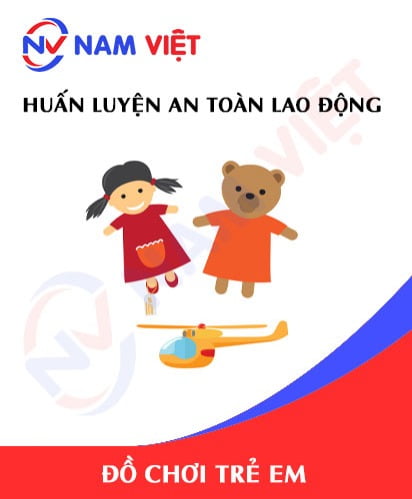
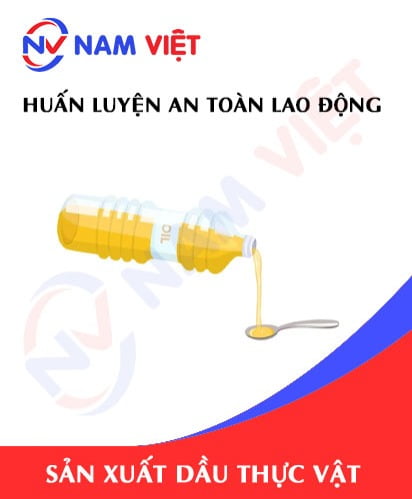
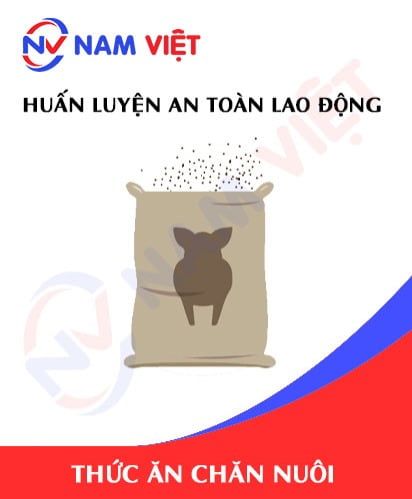
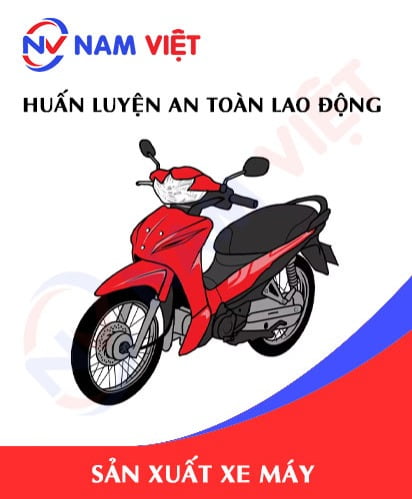

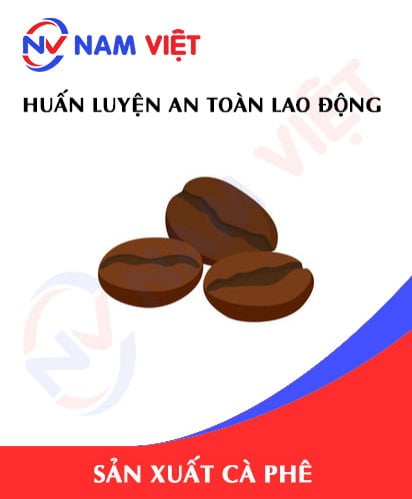
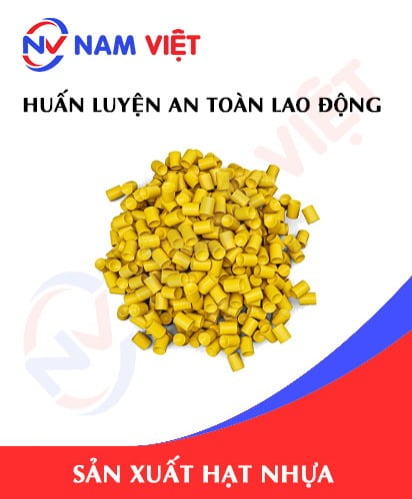
Review Occupational Safety Training for Wheel Rim Manufacturing
There are no reviews yet.